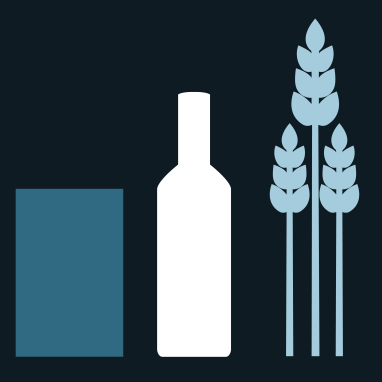Country of Origin Labelling laws get Ministerial approval - What do we know?
By Joe Lederman (Managing Principal, FoodLegal)
© Lawmedia Pty Ltd, April 2016
On 31 March 2016 a meeting of Australian Consumer Affairs Ministers agreed to new country of origin labelling (CoOL) laws. The laws were announced in July 2015 and a draft proposal was released for public comment in December 2015. Following a short public consultation period, the Ministers approved changes to the December 2015 version. This article considers the position adopted on 31 March 2016.
Background
FoodLegal Bulletin first covered the announcement of the new laws in its August 2015 article PM announces final version of Australia’s Country of Origin Law.
A. The workings of the new CoOL regime
The laws have not undergone any drastic changes since they were first announced. However, the 31 March 2016 meeting of Consumer Affairs Ministers has revealed more detail on the proposed operation of the CoOL laws.
1. Priority and non-priority foods
Application of the new labelling laws to particular products will depend on whether they are priority or non-priority foods.
Non-priority foods include:
- Seasonings
- Confectionary
- Biscuits and snack foods
- Bottled water
- Soft drinks and sports drinks
- Tea and coffee
- Alcoholic beverages
Non-priority foods must display a text statement of origin, but may choose to voluntarily display further information.
All other foods are classified as priority foods. These foods are required to display the following information:
- A kangaroo image in a triangle logo to indicate the food is made, produced or grown in Australia
- A bar chart indicating the proportion of Australian ingredients with a supporting text statement
2. Grown-in, produced-in and made-in
In order to make a claim of Australian origin, food must be grown-in, produced-in or made-in Australia
- Grown-in and produced-in mean that all ingredients are Australian, and major processing occurred within Australia
- Made-in means that the last substantial transformation occurred in Australia, even if not all ingredients are Australian
3. Packed-in claims
Food that has been packed in another country will also be required to provide a clear country of origin statement. If the country in which food is packed differs from the country in which it is grown, this must also be stated. In this instance, it is optional to state where the food was packed.
Where packed food is from multiple countries, a label such as ‘packed in Italy from imported ingredients’ may be used.
If food is packed in Australia from foreign ingredients, the kangaroo logo cannot be used. However, the gold bar may still be used to represent the proportion of Australian ingredients present.

4. Imported products and ingredients
Companies can choose to declare the origin of specific ingredients (for example, if a product contains 50% Australian ingredients but includes ham imported from Canada, this can be stated).

Products that are wholly imported still require a country of origin label. For priority foods, the country of origin claim must appear in a box on the label.
Where the product contains a proportion of Australian ingredients, this can be stated using the gold bar and descriptive text, but not the kangaroo logo.

5. Overseas processing
Where an Australian product is processed overseas without substantial transformation before being reimported to Australia, the label must state what processing occurred in brackets. The kangaroo logo can still be used in this case. A product is ‘substantially transformed’ where the end product is something fundamentally different from its ingredients.

6. Different ingredient sources
Where ingredient sources vary, companies can use labels that specify an average proportion of ingredients. The average will be calculated on a one, two or three year period that concluded within the past two years. The label must also provide a way for consumers to get information on the specific proportion of ingredients, either online or by phone.

B. Previous concerns
FoodLegal Bulletin has analysed the impact of the new laws.
Are Australia’s proposed new Country of Origin Labelling laws going too far? by FoodLegal Managing Principal Joe Lederman (February 2016) addressed some initial concerns.
The 31 March 2016 announcement has played down the issue of regulatory costs, emphasising that importers of products produced wholly overseas will face virtually the same requirements. However, as with any new regime, there will be initial costs as industry becomes familiar with compliance.
The ability for average proportions of mixed ingredients to be declared addresses concerns relating to companies having to make definitive claims as to the make-up of their products where ingredients are subject to seasonal supply.
The implementation of online resources and a style guide for businesses may address some flexibility issues and provide greater certainty.
The article CoOL: How do the ‘safe harbour defences’ differ in the new country of origin labelling framework? by FoodLegal Managing Principal Joe Lederman (February 2016) looks at the new laws in the context of amendments to existing safe harbour defences.
C. Next steps
The new laws will commence on 1 July 2016. There will be a two-year transition period for businesses to adapt, and current stock will be allowed to see out its use-by date. The laws will be implemented in a new Information Standard in the Australian Consumer Law, replacing the current laws in the Australia New Zealand Food Standards Code.
According to the Department of Industry, Innovation and Science, the work left to be done includes:
- Amending the Australian Consumer Law, including implementing the new Information Standard and altering the safe harbour defences
- Finalising an online tool and style guide for use by businesses
- Launching a national information campaign.
This is general information rather than legal advice and is current as of 30 Oct 2021. We therefore recommend you seek legal advice for your particular circumstances if you want to rely on advice or information to be a basis for any commercial decision-making by you or your business.
